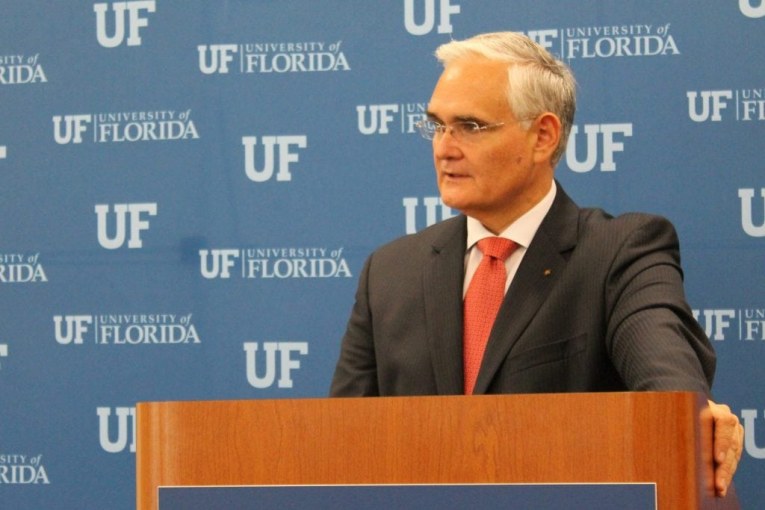
Jorge Quijano, the CEO of the Panama Canal Authority, spoke at a luncheon to attendees of the three-day-long Panama Considered: Remembering the Past, Embracing the Future 63rd Annual Conference on March 20.
Quijano’s talk encompassed the 100-plus-year history of the Canal and looked to the near future when the long-awaited expansion project will be complete, thereby allowing much larger ships to pass through in either direction at a cost-beneficent location.
The expansion will add two three-stage locks – giving it the largest lock footprint in the world – and increase the size of ships able to pass through it from the current 4,400 twenty-foot equivalent unit (a standard cargo measurement) ships to ships able to carry more than four times that much.
“It’s interesting to see what the isthmus of Panama has become,” he said. “Spaniards found land they had never seen before, and from there Panama became the shortest route from Spain to where the gold and silver was. Now the Canal is doing that for the rest of the world.”
Since the United States handed over control of the Canal on Dec. 31, 1999, Quijano said that the Canal authority has focused on moving away from being a budget-oriented strategic military point that charged every ship the same toll to a performance-oriented economic engine that’s not afraid to raise tolls and charge based on tonnage.
“But we have to make sure we do it right,” he said. “It’s a business, and if we don’t do it right then they can take their business elsewhere.”
Business is booming, though, and the numbers show that by 2025 demand for the Canal will increase from 340 million tons of cargo to 508 million tons. Sixty-five percent of that business originates in or is destined for the U.S., and more than 120 million tons of that touches the East Coast.
Matt Ubben, president of Floridians for Better Transportation, said Gov. Scott has made post-Panamax transportation infrastructure a priority, and upcoming legislation will see more funding for ports. Jacksonville and Miami are both going to benefit from the expansion, he said, and increased access to inland distribution centers like the proposed Plum Creek projects in Lake City and Alachua County, railroads and the interstates will position Florida to take advantage of increased shipping.
“So much freight comes into Florida through the Port of Savannah, and this is our chance to catch some of that,” he said.
Quijano said that with labor issues with the locks contractor taken care of and all of the project’s dredging scheduled to be done in early May, the authority is projecting a December 2015 completion date. The construction of the locks is 67 percent complete, 80 percent of the concrete is laid and 91 percent of all the electrical and mechanical equipment is in Panama. The project so far has cost $5.3 billion and is running within budget.
That cost is worth it, he said, because the economic numbers show that around 25 percent of Panama’s GDP is either directly affected by or touched by the Cana,l and 7 out of 10 tourists say that they come into Panama to see it.
More than 120 studies performed by the Canal authority show that companies can expect to find significant savings by using the newly expanded Canal, specifically in fuel costs. By being the closest major port to the continental U.S. and having ports in two oceans only 50 miles apart that can be reached in less than two hours by train, Panama is positioned to be a regional distribution center.
“We want Panama to be the transportation and logistics hub of the Americas, and we are trying to achieve the maximum potential of the geographical location” Quijano said. “We don’t want you to just go through. We want you to come in, stop and do business, and then go on through.”




